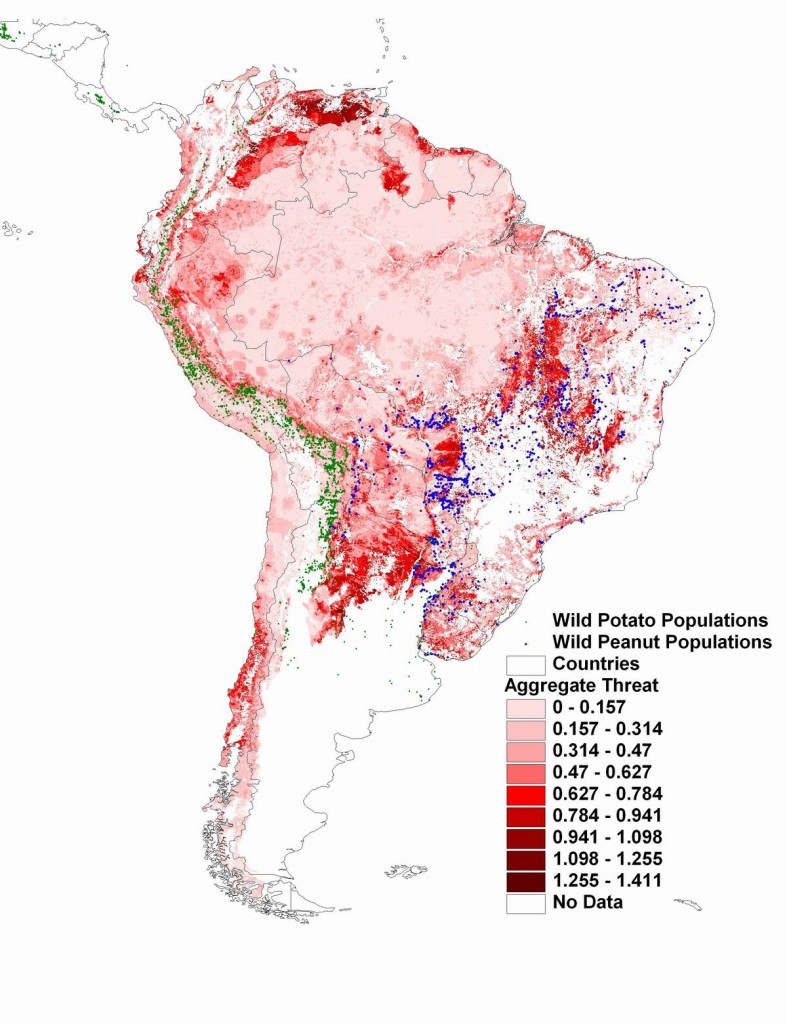- “New study warns that climate change could create agricultural winners and losers in east Africa.” Any other possibilities?
- “Researchers to perform sex change operation on papaya.” Bang goes a bunch of sexual diversity.
- Inherited wealth is good for farmers, better for herders, lousy for hunters.
- AGCommons is a CGIAR project to deliver information to farmers in Africa. Watch their new video, with added Andy Jarvis goodness.
Mapping threats to crop wild relatives
Our friend Andy Jarvis and co-workers recently published a paper in the Journal for Nature Conservation entitled “Assessment of threats to ecosystems in South America.” Very interesting in its own right, but check out the map below. Andy has very kindly superimposed for us the location of peanut and potato wild relatives on the ecosystem threat map from the paper. A good way to prioritize conservation? You saw it here first.

Geo mashup artist needed
Luigi mentioned the UK Science’s Museum’s interactive map on climate change and crops. Elsewhere, ((Yes, there is life outside agro.agro.biodiver.se.)) he draws attention to maps of diabetes around the world. Now I find a map of “small farms” in the US.
What I want, obviously, is a graphic that will show me any relationships between the prevalence of small farms and diabetes, over time, corrected for access to the internet, obviously, and for the whole world. Not a lot to ask, is it? Oh, and I can’t find diabetes at Gapminder World.
Nibbles: Cassava, Success, Fish, Models, Videos, Radio, Grazing
- South Africans produce virus-resistant cassava.
- Success stories in agricultural development documented. Some agrobiodiversity in there.
- Fisheries and food security. And more. And more: why not eat “weedy”fish?
- A crop modeler speaks.
- African agriculture is on youtube, but just barely.
- Forage grasses for beginners. Straight from the grazier’s mouth.
More graphics on the global effects of climate change on crops
The Science Museum in London has launched an interactive map. The data are from the Met Office’s Hadley Centre, as analyzed by the Walker Institute. I like the Hadley Centre’s one-page summary.